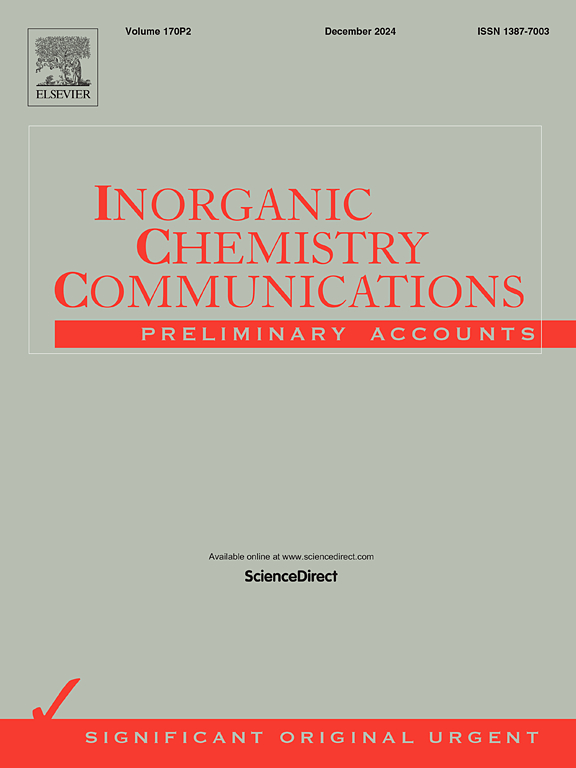Dual redox center-based copper-cobalt metal–organic framework as pseudocapacitive electrode material for supercapacitor
IF 4.4
3区 化学
Q1 CHEMISTRY, INORGANIC & NUCLEAR
引用次数: 0
Abstract
Metal-organic frameworks (MOFs) are gaining much attention in the field of energy storage due to their porosity and hybrid properties of inorganic–organic constituents. We report a synthesis of CuCo-MOF (CCM) using benzene-1,4-dicarboxylic acid as an organic linker via a less expensive reflux condensation method, which provides abundant active redox metal centers and accessible carbonyl-based redox sites for energy storage. Furthermore, XRD, FT-IR, Raman, SEM, and XPS are used to examine the crystalline structure and size, functional groups, morphology, and chemical states present in the CCM material respectively. The SEM micrograph shows sponge-like morphology which offers ion encapsulation ability helpful for fast electrolyte ion adsorption and desorption on the electrode surface. From BET analysis the surface area obtained was 192.027 m2/g for CCM material. Additionally, the CCM electrode exhibits excellent pseudocapacitive characteristics with a specific capacitance of 102.4F/g with remarkable energy and power density of 11.37 Wh kg−1 and 285.71 W kg−1 in the potential window range of −0.4 to 0.4 V at 3 mA cm−2 in a 2 M KOH electrolyte. To check the practical applicability, an asymmetric solid-state device was constructed which delivered an excellent specific capacitance of 111F/g with a maximum energy density of 22.2 Wh kg−1 and a power density of 1800 W kg−1. Therefore, the prepared CCM material plays a crucial role in the energy storage phenomenon.

求助全文
约1分钟内获得全文
求助全文
来源期刊

Inorganic Chemistry Communications
化学-无机化学与核化学
CiteScore
5.50
自引率
7.90%
发文量
1013
审稿时长
53 days
期刊介绍:
Launched in January 1998, Inorganic Chemistry Communications is an international journal dedicated to the rapid publication of short communications in the major areas of inorganic, organometallic and supramolecular chemistry. Topics include synthetic and reaction chemistry, kinetics and mechanisms of reactions, bioinorganic chemistry, photochemistry and the use of metal and organometallic compounds in stoichiometric and catalytic synthesis or organic compounds.
 求助内容:
求助内容: 应助结果提醒方式:
应助结果提醒方式:


